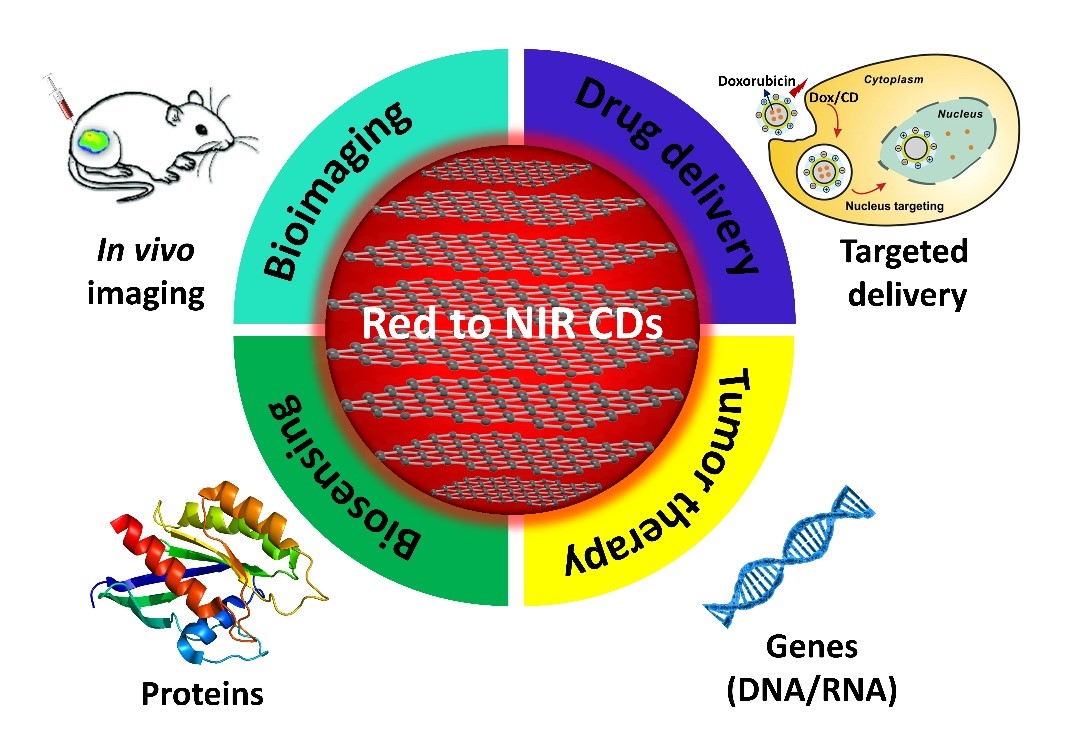Carbon dots (CDs) that exhibit near-infrared (NIR) emission are emerging nanomaterials with potential for advanced biomedical applications due to their low toxicity, superior photostability and targeting ability compared to currently used photoluminescence (PL) agents. While yellow and green CDs offer advantages such as excellent photostability, water solubility, and biocompatibility, R/NIR-CDs provide additional benefits including minimal autofluorescence, reduced photodamage, and deep tissue penetration. As a result, R/NIR-CDs are particularly intriguing for their biomedical applications in early tumor diagnostics and treatments bothin vitroandin vivo. This review article highlights recent progress in the development of vital strategies, PL mechanisms, potential biomedical applications, and future directions for overcoming key limitations of R/NIR-CDs. The influence of physical and chemical parameters on the formation mechanism toward longer wavelengths is comprehensively discussed. Early diagnosis of cancer and their treatments with laser phototherapy are also highlighted in different ways in this review.
Moreover, multicolor CDs with various fluorescence properties are categorized based on their size or other factors. It hopes that the perspectives presented in this review will facilitate advancements in developing new and improved R/NIR-CDs better suited for the respective applications.

Graphic:The fundamental strategies, photoluminescence mechanisms, potential biomedical applications, and key challenges with prospects of Red/NIR-CDs are reviewed.
Dr. Muhammad Muzammal Hussain, a Post-doc atInstitute for Advanced Study in Shenzhen University is the first author, and Prof. Hai Xiong is the corresponding author. Prof. Yen Wei in Tsinghua University is the co-author.This work is supported by the Science and Technology Innovation Commission of Shenzhen, China (JCYJ20210324095607021 to HX), the Special Project of Key Fields of Universities in Guangdong Province, China (2021ZDZX2047 to HX), and in part by the National Natural Science of China (NSFC 21788102).
The review paper linked in https://www.sciencedirect.com/science/article/pii/S1385894723017412


